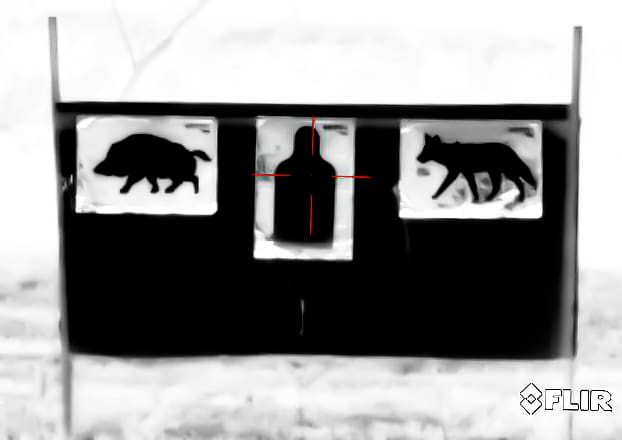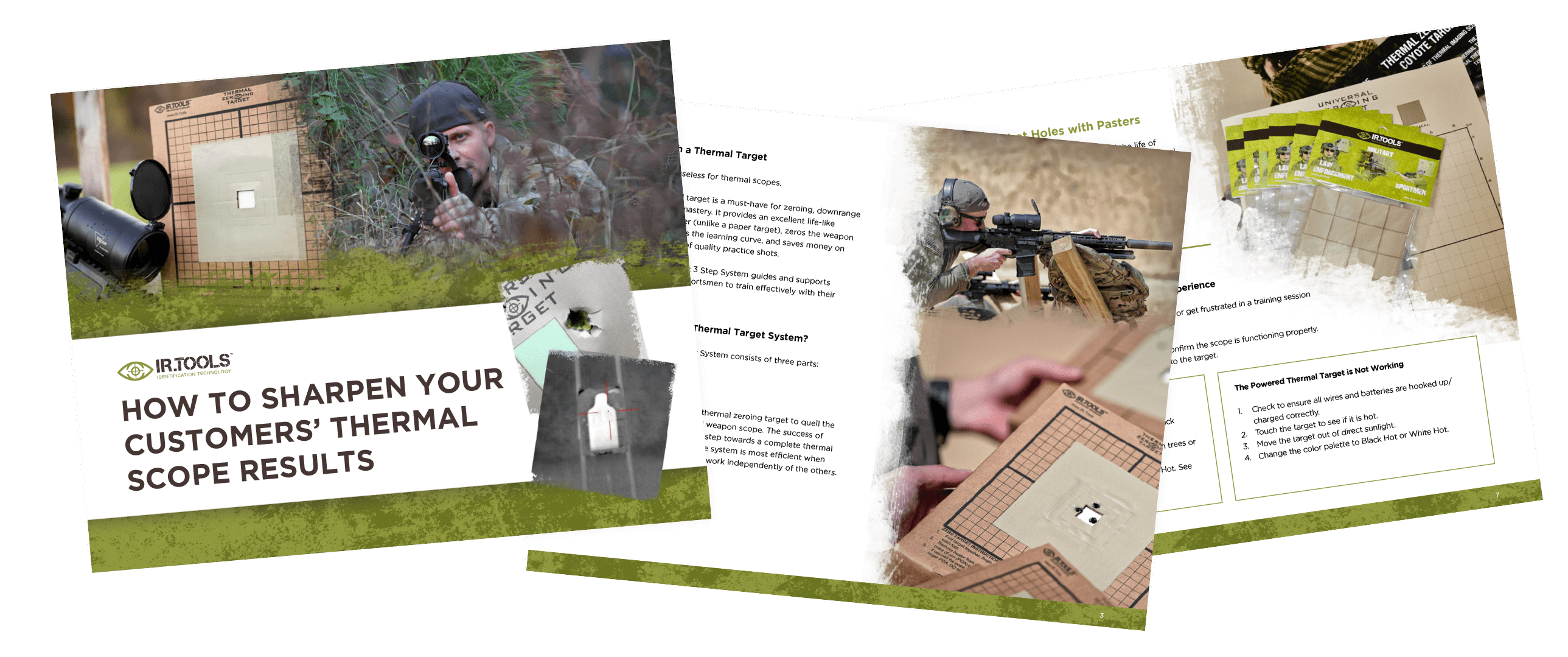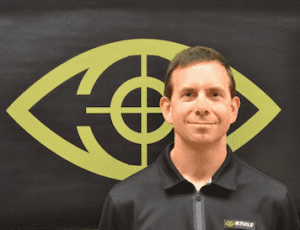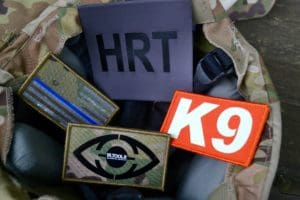How your passive/powered thermal shooting targets works and why you need one.
Contrast is a must for your thermal shooting target.
The better the contrast, the better the shooting target.
In the end, the better your training.
When you look through your optic viewfinder, you will see a scene of contrasts. Depending on your device settings, the trees, buildings, people and your target will appear in a variety of contrasting colors.

To optimize your training/target practice, you want the contrast of your thermal target to “stand out” because a dull contrast wastes your time and makes for a frustrating shoot.
When you take aim, you want a target that is easy to see.
So what creates the contrast on your thermal target?
Understanding your thermal target contrast
A passive thermal target works with no additional power source. All you need is the target and the sky.
To create the contrast the target reflects the heat energy or temperatures in the sky. As a mirror reflects your face, the cooler sky temperature reflects or bounces off the thermal target.
Just remember, all living things produce heat. A human produces significant heat, a rock does not.
Therefore, there is a notable contrast in temperature between a human and a rock. A passive thermal target masquerades as a rock by reflecting a cooler temperature from its environment.
Therefore, the target appears cold in contrast to the warmer trees, buildings, etc… in its background. The cold target ”pops out” from its warm surroundings for a distinct contrast.
While the advantages of a passive, no power thermal target are appealing, the new powered thermal targets are even more significant.
Catapult your training with a powered thermal shooting target
Although the passive thermal target is effective and fulfills a training requirement, adding power to the target takes the training to a new level.
With 80% of the military and SWAT units deploying advanced scope sights in their operations, the need for a durable, consistent thermal target to train on is imperative.
A powered thermal target is the answer.
Your powered thermal shooting target has advantages not found in a passive target.
- The target works inside and outside. Your training options are endless.
- Clouds and temperatures do not affect the target. The power maintains a consistent image to shoot.
- The target is hot. The enemy is “hot.” Therefore, you train like you fight.
- Multiple shooters can shoot at the same target at the same time from multiple angles.
Rubberized Powered Thermal Targets
There are many DIY videos on the internet for building your own powered thermal targets. The list of items goes on and on, and while it may seem like you are spending a little bit of money to pull it together, your time is also valuable. Not to mention, the contrast and durability of a DIY have proven doubtful.
and on, and while it may seem like you are spending a little bit of money to pull it together, your time is also valuable. Not to mention, the contrast and durability of a DIY have proven doubtful.
IR.Tools recently partnered with rubberized® heat technology to expand our thermal target inventory to include a powered thermal target option. Once you shoot a durable, high contrast IR.Tools rubberized heated powered target, say goodbye to your DIY.
Features and benefits of a rubberized shooting target:
- Remarkably durable — built with a proprietary thin, rubber- like, nearly indestructible material.
- Super contrast — no flaring for consistent image.
- Extremely safe — no wires to short circuit or catch fire
- Cost effective — image is visible for over 500 rounds.
- Energy efficient — powers up on a 12-24v battery.
- Realistic hot image — exceptional image contrast.
- Dual function — target defaults into a passive target.
This target travels anywhere, turns almost any backer into a thermal target and its amazing multi-hit capability is virtually impossible to destroy.
White Hot or Black Hot Setting on Your Optics?
Regardless of the thermal target you choose to train with, passive or powered, understanding the settings or color palette on your device is critical to your training success.
How do you know what settings to use?
There really is no “correct” setting. Your choice of setting depends on the scene, temperatures, optic quality, target and your personal preference. The good news is, to rotate back and forth between the settings palette is an easy flip switch. Once you are familiar with the optic settings, you will find what works best for your training scenario.
White hot is the most common setting used for military, law enforcement and hunting. Users find white hot is best for the various temperatures found in  landscapes and urban areas.
landscapes and urban areas.
In white hot, the warmer objects will appear white and the cooler objects dark. In this setting your passive target is black and the powered target is white.
Running a close 2nd is the Black hot setting. This is the inverted version of white hot. Warmer objects will appear black and cooler objects will be white. In this setting your passive target is white and the powered target is black.
Spend time with the Color Palette
Spend some time with the rest of the color palette. Sepia, Rainbow HC, Arctic, Ironbow, Outdoor Alert are all settings worth learning. The more time you spend experimenting, the more confident you are when faced with taking a life-saving shot.
Plan ahead for your best shooting experience
Before you head out, consider your goals, and evaluate which thermal target is best for you—Passive or Powered?
If you’re overwhelmed, give me a call and I will guide you in your choice.
443.292.8885, tboyer@ir.tools
Stay safe and God Bless
Download the Free Guide
How to Sharpen Your Customers’ Thermal Scope Training


Since 2006, Tom has been the driving force behind IR.Tools, dedicated to delivering top-notch infrared solutions to the military, law enforcement, and sportsmen communities.
What began with a single infrared patch has blossomed into a comprehensive store featuring hundreds of IFF patches, vehicle IFF, an extensive suite of thermal training targets, and tools for drone pilots.
Beyond his innovative products, Tom is passionate about educating users on infrared technology and showcasing how advancements in IR can enhance their operations.
Tom holds an MS in Mechanical Engineering from the University of Maryland and an MBA from Regents University.


Trackbacks/Pingbacks